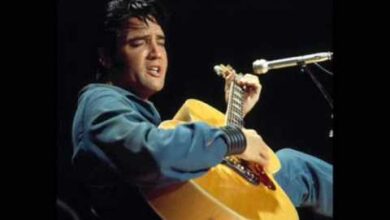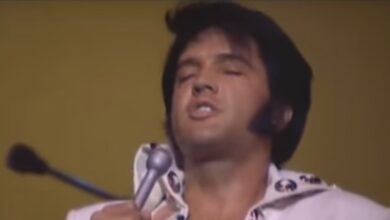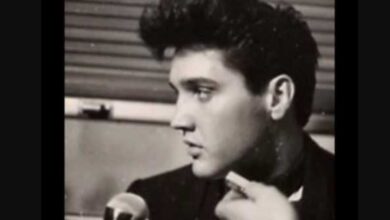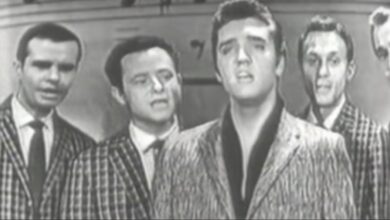It’s tragic to know this performance occurred less than a year before he left us
Elvis Presley’s performance of “Auld Lang Syne” during his New Year’s Eve concert is one of the most memorable moments in his illustrious career. Filmed on December 31, 1976, at the Civic Center Arena in Pittsburgh, Pennsylvania, this event holds a special place in the hearts of Elvis fans. It was one of the last public performances before his untimely death on August 16, 1977, making it a poignant reminder of his enduring talent and charisma.
“Auld Lang Syne” is a traditional Scottish song often sung to bid farewell to the old year and welcome the new one. Elvis’s rendition of this classic was both heartfelt and powerful, showcasing his vocal prowess and emotional depth. The performance resonated deeply with the audience, as Elvis’s ability to connect with his listeners through music was on full display. His interpretation of the song brought a sense of warmth and nostalgia, fitting for the New Year’s Eve celebration.
The concert itself was a significant event, drawing a massive crowd eager to see the King of Rock ‘n’ Roll. Elvis’s setlist for the evening included many of his greatest hits, ensuring that fans were treated to an unforgettable night of music. His performance was characterized by the energy and passion that had come to define his live shows. Despite the challenges he faced with his health at the time, Elvis delivered a show that demonstrated why he remained a beloved figure in the music industry.
Reflecting on Elvis’s career, it’s clear that his influence extended far beyond his lifetime. Born on January 8, 1935, in Tupelo, Mississippi, Elvis Aaron Presley rose to fame in the mid-1950s with his unique blend of rockabilly, rhythm and blues, and country music. His charismatic stage presence and groundbreaking musical style captivated audiences around the world. Songs like “Heartbreak Hotel,” “Hound Dog,” and “Jailhouse Rock” became anthems of a generation, solidifying his status as the King of Rock ‘n’ Roll.
Elvis’s impact on popular culture was profound. He was not only a musical icon but also a cultural phenomenon who influenced fashion, dance, and attitudes. His appearance on television shows, such as The Ed Sullivan Show, broke viewership records and helped to establish rock and roll as a dominant genre in the music industry. Elvis’s ability to bridge racial divides through his music also played a crucial role in the social changes of the 1950s and 1960s.
Throughout his career, Elvis received numerous accolades and awards, including three Grammy Awards and the Grammy Lifetime Achievement Award. His contributions to music were recognized by his induction into multiple music halls of fame, including the Rock and Roll Hall of Fame, the Country Music Hall of Fame, and the Gospel Music Hall of Fame. These honors reflect his versatility as an artist and his significant impact on various musical genres.
Despite his fame and success, Elvis’s life was not without challenges. His later years were marked by health issues and personal struggles, which were often exacerbated by the pressures of stardom. Nevertheless, his dedication to his craft never wavered, and he continued to perform and record music up until his final days. The legacy of his music endures, continuing to inspire new generations of artists and fans alike.
Elvis’s performance of “Auld Lang Syne” remains a touching tribute to his enduring legacy. As the strains of the song filled the arena that New Year’s Eve, it was clear that Elvis had left an indelible mark on the world of music. His ability to convey deep emotion through his performances ensured that he would be remembered long after the final notes had faded. Today, fans continue to celebrate his life and music, honoring the King of Rock ‘n’ Roll and the timeless impact of his artistry.



